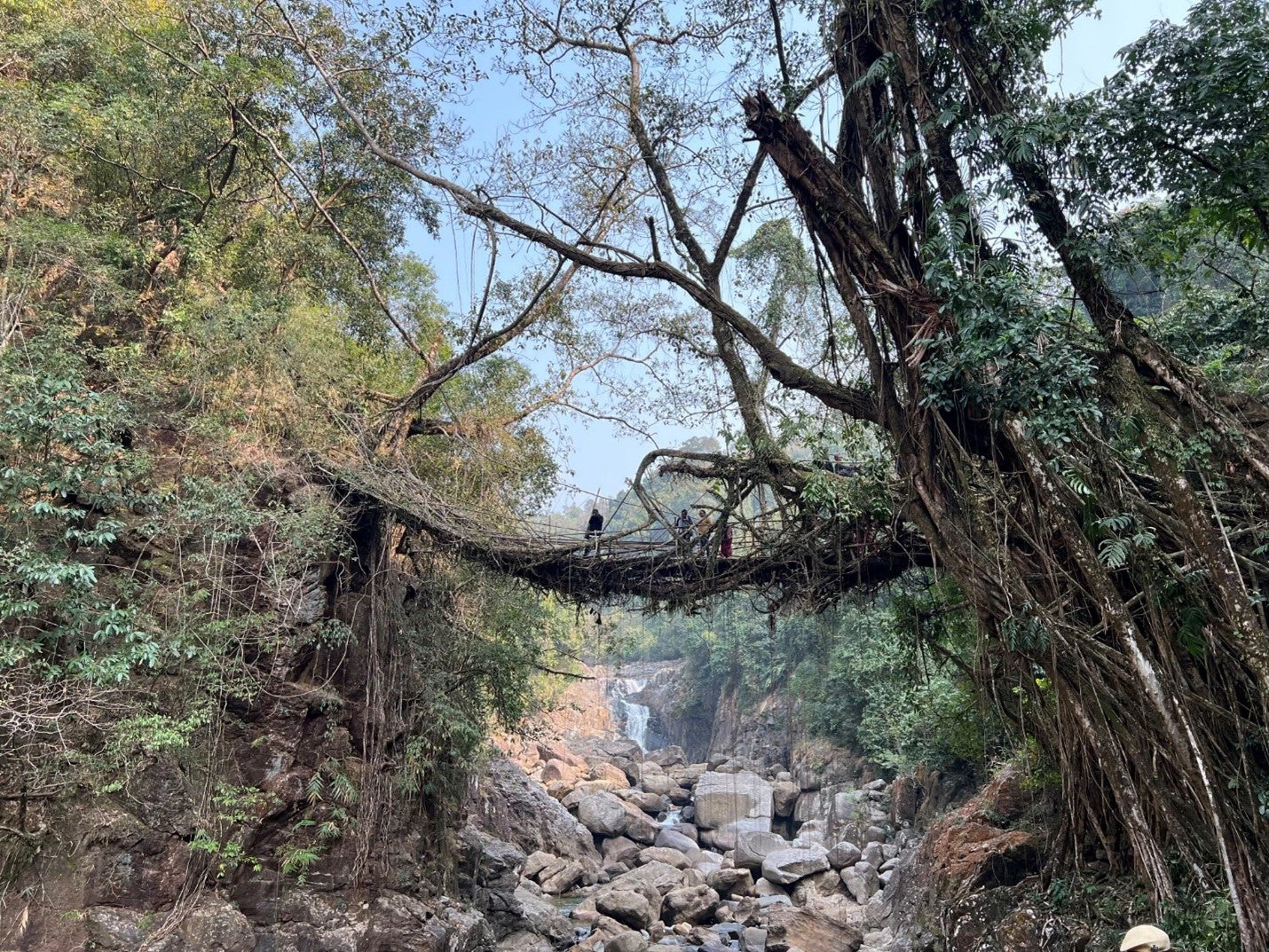 A truck moving on a dusty road in Northeast India. Photo: Srinivasan Balaji/ Shutterstock
A truck moving on a dusty road in Northeast India. Photo: Srinivasan Balaji/ Shutterstock
As the dust settles on the road to the Dawki Integrated Check Post (ICP) in Meghalaya, near the India-Bangladesh border, a winding queue of some 750 trucks can be seen lined up on the side. The trucks— mainly loaded with limestone and crushed stone— patiently wait for clearance to cross 250 meters into Tamabil in Bangladesh, where they will offload cargo and return empty to pick up the next load. The procedure is set since India and Bangladesh do not allow each other’s trucks to ply their roads. On the other side of the ICP in Bangladesh, there are no queues in sight as barely 15 trucks a month cross into India despite significant trade potential.
Across the Northeast region in India, long delays at borders, congested roads, and limited connectivity have been a familiar constraint to growth. This has restricted trade, economic activities, and overall development in the region.
A land of abundant natural resources, the Northeast has stood out for its lack of connectivity. Its only connect to the rest of India hinges on the narrow (22 kilometer) Siliguri Corridor, also known as the “chicken neck”. Because of this, the routes and roads for trade are unnecessarily long — for instance from Agartala in Tripura, the nearest port in Kolkata is a 1,600 kms road journey through Siliguri.
For any cargo truck, this means increased costs that reflect in higher consumer prices. A World Bank report estimates that compared to West Bengal, the prices of goods in Northeast are up to 60 % higher in rural areas, and 30 % in urban locations . This can change, starting with improving transport integration, infrastructure, and trade facilitation.
Better connectivity for better lives
At a workshop on Unlocking Economic Opportunities in Northeast India held in Assam in January 2023, there was a broad consensus on the need to implement the Motor Vehicles Agreement between Bangladesh, India, and Nepal. The agreement, signed in 2015 but not yet implemented, seeks to facilitate unrestricted cross-border movement of cargo, passenger, and personal vehicles between these countries. For the Northeast, if the trucks were allowed to transit via Bangladesh, it would reduce distance by almost 65% and transport costs by 68 %. The 1,600 km journey from Agartala to Kolkata will be cut short to 450 kms via road through Bangladesh, and a mere 200 kms for direct access to the Chattogram port in Bangladesh.
Shorter journeys mean lower transport costs, which in turn will have multiplier economic effects — it will increase competition and production, lower costs of goods, and scale up wages. As per the World Bank report, the average wage increase can be between 4.5% to 11% for bordering Indian states, and 24% for Bangladeshi states, particularly Dhaka and Chattogram.
The Northeastern states of Assam, Meghalaya, Mizoram, and Tripura will gain the most in terms of real income gains. The benefits will spread to India’s other states including West Bengal, which will see the highest wage increase; Uttar Pradesh, which can leverage its large labor force and proximity to Bangladesh; and Maharashtra, which is among the main industrial states in India and can tap better trade opportunities with the Northeast and Bangladesh. Overall, the MVA can potentially translate into windfall gains with an increase in national income of close to 17% in Bangladesh and 8% in India.
Scaling value chains, tapping strengths
In parts of Northeast, Farmer Producer Companies supported by Assam Agribusiness and Rural Transformation Project, with financing from the World Bank, are using innovative technologies to add value to agriproducts, improve their resilience in value chains, and help build a community of small and medium entrepreneurs, many of whom are women. The production is slowly expanding to meet the demands of the region, and there is some potential to trade with other states in India, neighboring countries such as Bangladesh, and even Southeast Asia. Integrated connectivity can open those markets, and drive trade and investment. The Northeast contributes to only 2.8 % of India’s GDP, which is scratching the surface of its immense potential.
The region’s strengths are also its unique culture, reverence for nature, and pristine beauty. In Meghalaya, the indigenous Khasi community has perfected the art of weaving living roots of trees into intricate bridges— an ancient skill which is making its way to even European cities. The communities are investing in conserving natural resources, ancient practices, and are ready to host eco-tourists. Given its strengths and sustainable practices, Northeast can become a hub for eco and wellness tourism.
Wheels are in motion, it is just the start
Back to Dawki, there is bustling activity as construction of the ICP is underway. The post, spread over 23 acres, will be fully operational in the next few months with its integrated facilities including for customs clearance, immigration, testing, and digital tools. The ICP is ready to welcome tourists and traders in larger numbers once the MVA is implemented. Across the Northeast, Bangladesh, Bhutan and Nepal, a host of other projects are in motion, supported by the World Bank, to expand railway connectivity, tap inland waterways, and improve border trade and travel, for an integrated development in the subregion.
The wheels are in motion to tap the immense potential of the Northeast region, and this could just be the beginning of a lasting journey to greater development.



Join the Conversation